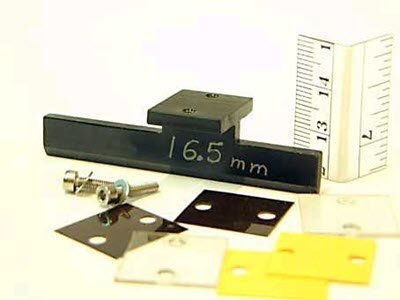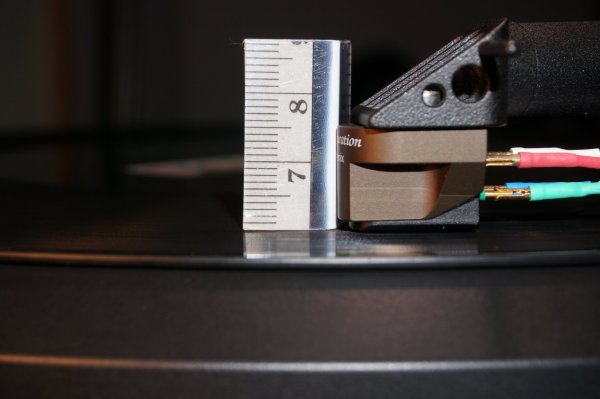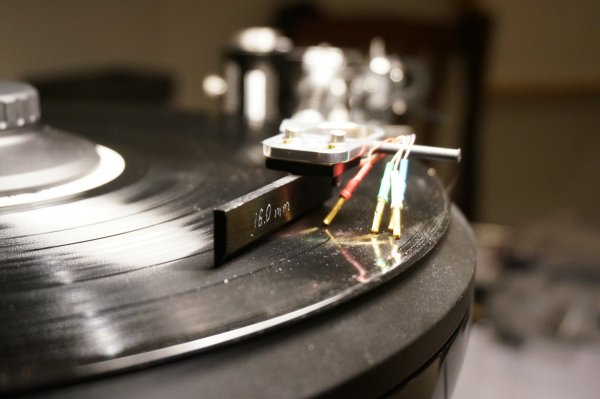Hi guys. I think this is my first time posting on whatsbestforum. I tried looking for the rules of engagement before posting this but could not find any. If this violates the rules of the forum, please advise me and accept my apologies.
There was some question as to the accuracy of the WallyTractor pivot to spindle ruler versus the SmartTractor that I'd like to address. The "beam" style protractors used by SmartTractor and Feickert have a couple disadvantages for getting pivot to spindle dimension determined accurately when compared to arc protractors.
1. Stacked tolerance errors. On Beam style protractors, there are at least four parts that must fit together across X, Y & Z axis in a manner that offers perfect perpendicularity on the horizontal plane to the radius the stylus is situated on AND ALSO remain perfectly vertical for each vertically oriented part - at each part mating so that the pin hanging over the pivot point is perfectly vertical to the horizontal alignment plane and not shifted at all on the horizontal plane off of said perpendicularity requirement. This is TOUGH to do. How can we be sure it has been accomplished? Add to this the uncertainty that the tonearm manufacturer has accurately marked the pivot point on top of the tonearm housing - if it has been done at all.
2. Parallax error. To situate the pin over the pivot point you cannot have your eye in the proper position to confirm the alignment as it is impossible to see straight through the axis of the pin. We are forced to lean to one side and determine from there. This causes parallax error (and is also the reason one should ONLY use a mirrored protractor when aligning the cantilever). If the pin is VERY sharp and cut into a severe cone shape AND if the pin is less than a millimeter from the pivot point, then parallax error can be reduced. However, if you are a half of a millimeter off on the pin alignment to the pivot point, then you can be a half of a millimeter off on your stylus position. This is the same difference of Baerwald vs Leofgren on a 9" arm.
Arc protractors bypass this concern because if you can have your stylus trace the arc then you can know with certainty that the centerpoint of the arc's radius is EXACTLY in the same horizontal position as your pivot point. This is why I don't go into much discussion about the use of the pivot to spindle ruler. It comes in handy when a customer reaches out to me to say they couldn't reach the targeted arc. I then have them measure P-S and often find that the arm was not well installed. We can usually always find an arc that will work for such cases.
Further, if you have enough play in your headshell slots and can achieve stylus alignment in the arc then why do you need to know your pivot to spindle distance is exactly what the manufacturer calls for? I have done the math on MANY manufacturer specs and see that about 25% of them are calling for non-IEC standards of the innermost and outermost grooves. Some are using off-spec groove assumptions and so on. The only one I know that is forthright about such assumptions is Marc Gomez of SAT.
Check this out for more information:
VIDEO HERE. You'll see my rationale for why aligning for maximum angular error performance at the inner groove fails to take into account what your records (on average) require!
Be well!
J.R.









